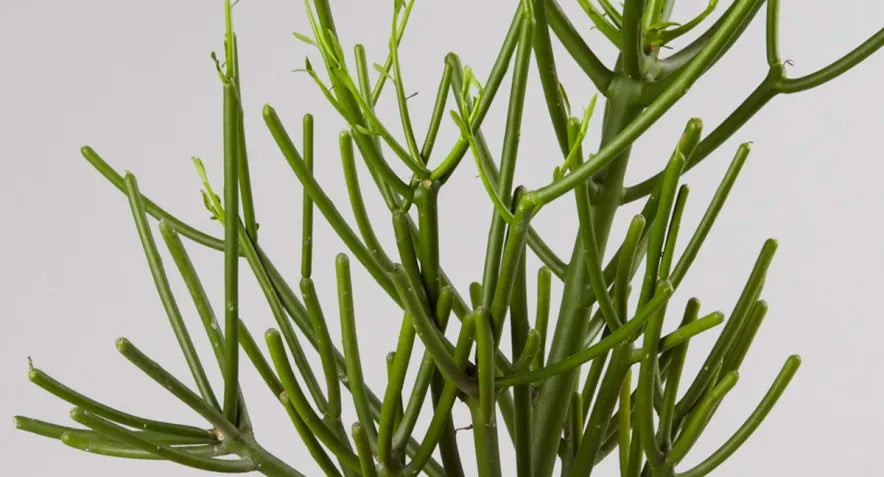
Plants 101
How to Care for a Cactus
Learn how to create the best growing conditions for a Cactus.

Cacti are fascinating plants that belong to the family Cactaceae, which includes more than 2,000 species. They are native to the Americas, particularly to arid and desert regions. They have adapted to survive in harsh environments with low water availability and intense sunlight.
One of the most distinctive features of cacti is their succulent nature. They have thick, fleshy stems that serve as water storage organs, allowing them to endure long periods of drought. The stems are usually ribbed or segmented, providing flexibility and the ability to expand and contract as water availability fluctuates.
Cacti lack leaves or have reduced leaves to minimize water loss through transpiration. Instead, they have modified structures called spines. Spines help reduce water loss by providing shade, reducing airflow around the plant, and deterring herbivores.
Flowers are often vibrant and showy, blooming for short periods of time. They typically have numerous petals and are adapted for pollination by specific pollinators, such as bats, moths, or birds. Many cacti also produce delicious fruits that serve as a food source for animals in the desert ecosystem!
Cacti are remarkable plants that have evolved unique adaptations to survive in extreme conditions. Their distinct morphology, water storage abilities, spines, and beautiful flowers make them iconic symbols of arid landscapes worldwide.
Types of Cacti
There are many different types of cacti, including:

Barrel cactus: A round species of Ferocactus that gets its name due to its barrel shaped stem which bares thick stiff spines. This cactus is prized for its beautiful blooms around Spring/Fall that encircle the crowns diameter once it reaches maturity.

Blue Candle Cactus: A popular species of Cacti native to Mexico that gets its name due to its unusual blue-green colored stems that branch freely like a candelabra.

Mammillaria cactus: A species of Cacti native to central Mexico with dark green stems and bronze-orange spines. This drought-tolerant species creates clusters of offsets that can easily be propagated to form new plants, and may surprise you with delicate pink or yellow flowers in Spring.
Caring for Cacti
Sunlight
Cacti need bright, direct sunlight to thrive. They are not suited for low light areas in the home but can tolerate bright indirect light. Place them near a South or West-facing window which provides the most light, but they can do well in an Eastern window that gets morning direct sun.
Not sure if your space will provide enough light? Consider measuring light to ensure your Cactus will receive enough!
Water
Cacti are drought-tolerant plants and don't require frequent waterings. The best way to water a cactus is using the "soak and dry" method by allowing the soil to dry out completely and then give it a thorough soak to evenly and thoroughly saturate the soil.
During the growing season, you may see yourself watering a Cactus weekly if they are in smaller containers that are 3" in diameter or smaller, or every 2-3 weeks for those in larger containers. Reduce watering during the winter months. You can utilize a moisture meter to help you properly gauage soil moisture and avoid overwatering.
Humidity
Cacti prefer low humidity levels, so it's best to keep them in a dry environment. Avoid placing them in a bathroom or other area with high humidity, as this can cause fungal diseases to develop or the soil to remain moist for too long.
Temperature
Cacti prefer warm temperatures, between 60°F and 80°F (16°C to 27°C). They can tolerate cooler temperatures in the winter, but should be kept away from drafts and sudden temperature changes.
Soil
Cacti require well-draining soil that is low in nutrients. You can use any standard cactus potting mix that is well-draining. Cacti are susceptible to root rot if they are planted with a standard potting mix or garden soil which retains moisture and has a higher level of nutrients.
Common Problems
SYMPTOM:Wrinkled, dry potting mix
CAUSE: Thirsty plant, underwatered
SYMPTOM: Yellowing and mushy leaves, wet potting mix
CAUSE: Overwatered
SYMPTOM: Bleached spots
CAUSE: Too much direct sunlight, mostly from moving Cacti outdoors without acclimating them
Precautions
While cacti are generally safe to grow in the home, there are a few precautions you should take to ensure the health and safety of yourself and others:
- Spines: Cacti have sharp spines that can cause injury if touched or handled improperly. When handling a cactus, wear thick gloves and use a pair of tongs or pliers to move the plant.
- Children and pets: Cacti can be dangerous if ingested, so keep them out of reach of children and pets. Ingesting the spines or skin of a cactus can cause irritation, vomiting, and other symptoms.
By following these tips and taking the necessary precautions, you can enjoy the unique beauty of a cactus in your home without any issues.

Words By The Sill
Empowering all people to be plant people—a collection of articles from The Sill's team of plant experts across a variety of plant care topics to inspire confidence in the next generation of plant parents. Welcome to Plant Parenthood™.
Do Some Plant Shopping